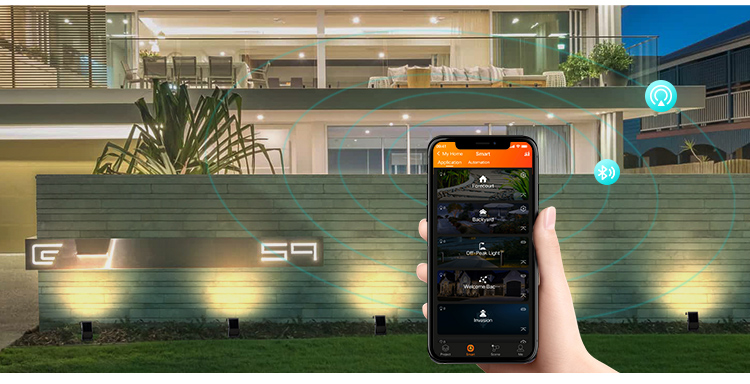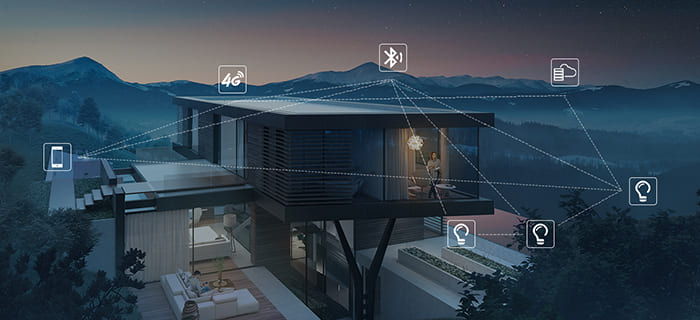The construction of smart cities has become a key issue in the global urbanization process. Empowered by science and technology, smart cities can effectively address challenges such as resource scarcity, environmental degradation, and traffic congestion, providing urban residents with a more efficient, convenient, and sustainable lifestyle. In this urban transformation, intelligent solar lighting systems play an irreplaceable role as a crucial component of energy management and utility optimization. Industry leader Sottlot is driving the construction and development of smart cities through innovative technology.
What is a Smart City?
Definition and Composition of a Smart City
A smart city is a model of urban governance that relies on digital technology, data analytics, and information and communication technology (ICT). Its core goal is to achieve the optimal allocation and intelligent management of urban resources. This is reflected in the following aspects:
- Interconnectivity: Through Internet of Things (IoT) technology, various devices in the city are connected, forming an intelligent network for real-time monitoring and collaboration.
- Intelligent Management: Optimizing the operation of systems such as transportation, energy, and waste management with the help of big data and AI technology.
- Environmental Protection and Sustainability: Utilizing renewable energy to reduce environmental pollution and improve resource efficiency.
Smart City Goals and Global Trends
A smart city is not only a product of technological development but also a solution to modern urban challenges. Its construction goals align closely with the UN Sustainable Development Goals (SDGs), with key objectives including:
- Reduce Energy Consumption and Emissions: Promoting the use of renewable energy.
- Build Resilient Infrastructure: Enhancing the city’s ability to respond to natural disasters and emergencies.
- Enhance Residents’ Quality of Life: Meeting citizens’ diverse needs through intelligent urban services.
In this context, intelligent solar lighting systems play a vital role in achieving these goals.
Role of Intelligent Solar Lighting in Smart Cities
Improving Energy Efficiency
Intelligent solar lighting systems significantly reduce dependence on traditional fossil fuels by converting solar energy into electricity. This not only reduces energy costs for cities but also lowers greenhouse gas emissions, contributing positively to environmental protection.
Technology Highlights:
- Advanced Battery Storage Technology: Sottlot uses lithium-ion battery technology to ensure a stable power supply even in low-light or adverse weather conditions.
- Intelligent Power Management: Sottlot’s ALS 2.5 system dynamically optimizes power usage, extending the runtime of lighting fixtures.
Enhancing Public Safety and Convenience
Lighting is not only a basic necessity but also an essential factor in improving urban safety. Sottlot’s intelligent lighting systems are equipped with numerous safety features:
- Motion Sensors and Automatic Brightness Adjustment: Automatically adjusts brightness based on environmental conditions and pedestrian flow, reducing light pollution while saving energy.
- Reduced Accident Rate: Efficient lighting helps reduce traffic accidents and nighttime crime, enhancing citizens’ sense of security.
Core Advantages of Sottlot Intelligent Solar Lighting System
- Advanced Artificial Intelligence Technology
Sottlot integrates AI technology deeply into its lighting systems to offer users a smarter and more convenient experience:
- Intelligent Interactive Function: Through the ADELOT app, users can make real-time adjustments to lighting effects, enhancing interaction with the system.
- Customizable Scene Function: Users can set different lighting modes based on their needs, such as work, entertainment, or emergency modes.
- Powerful IoT Integration
Sottlot’s intelligent solar lighting system utilizes Bluetooth Mesh 5.0 technology to support seamless connectivity, providing a convenient control experience for city management:
- Global Monitoring and Management: Hundreds of lighting devices can be easily controlled and managed through a unified platform.
- Cross-Device Linkage: Lighting is intelligently interconnected with security, traffic monitoring, and other systems.
- Regionalized Control: The system automatically adjusts the lighting scheme according to the needs of different urban areas.
- Durability and Environmental Adaptability
Sottlot’s lighting products are designed with the complex climatic conditions of modern cities in mind, ensuring stable operation in various environments:
- High-Grade Protection Material (IP66): Waterproof and dustproof, making them suitable for harsh weather conditions.
- Temperature Control and Energy Efficiency Management (TCS 3.0): Extends the service life of the equipment while reducing maintenance costs.
Practical Application Scenarios of Intelligent Solar Lighting
High-End Neighborhoods and Residential Areas
In residential areas, intelligent solar lighting not only meets basic lighting needs but also improves the quality of life:
- Atmosphere Creation: By adjusting light color temperature and brightness, it provides a comfortable nighttime environment for residents.
- Security: Linking with surveillance cameras ensures 24-hour monitoring of key areas, enhancing residents’ sense of security.
Commercial and Public Spaces
Sottlot’s intelligent lighting solutions can significantly improve the functionality and utilization of public spaces:
- Supporting the Night-Time Economy: Bright, energy-efficient lighting for parks, plazas, and commercial districts attracts more visitors.
- Event and Emergency Management: Flexible scene settings provide optimal lighting for festivals, events, or emergencies.
Emergency and Disaster Management
In the event of a power outage or disaster, the intelligent solar lighting system’s independent power supply and strong energy storage capabilities provide continuous lighting support, ensuring the city’s emergency management capabilities.
Sottlot’s Commitment to Innovation and Sustainability
Since its inception in 2004, Sottlot has been committed to driving technological innovation in the lighting industry. Key technological breakthroughs include:
- Low-Power Bluetooth Mesh Network: Improving the efficiency and stability of device connectivity.
- High-Efficiency Battery Management System (BMS): Extends battery life and reduces e-waste.
Sottlot not only continues to innovate in product development but also actively collaborates with governments and enterprises to promote smart solar solutions, supporting global smart city development and green growth.
Business Value of the Smart Solar Lighting System
- Cost-Effectiveness
By reducing energy consumption and lowering maintenance costs, Sottlot’s Smart Solar Lighting System offers significant economic benefits to businesses and municipalities. Its low operating costs make it a sustainable, long-term solution.
- Scalability and Customization
Sottlot’s lighting systems are highly scalable and can be individually configured to meet the needs of different municipalities, adapting to a wide range of applications from small communities to large metropolitan areas.
Frequently Asked Questions (FAQs)
- How does smart solar lighting support smart city goals?
It combines sustainability, high performance, and intelligent features, perfectly aligning with the goals of smart cities. - Can Sottlot’s products work in bad weather?
Yes, with TCS 3.0 technology and IP66 protection design, Sottlot products are able to operate stably in extreme environments. - How long does the system last?
Sottlot uses high-quality materials and innovative technology to keep the equipment running efficiently for a long time.
Sottlot for Smart Cities
With its intelligent solar lighting system, Sottlot combines technology and sustainability to support the development of smart cities worldwide. Whether improving energy efficiency or enhancing urban safety management, Sottlot’s products are driving the smart transformation of cities. By adopting Sottlot’s solutions, municipalities and organizations can not only create a more livable environment for their residents but also build a greener, smarter city for future generations.


